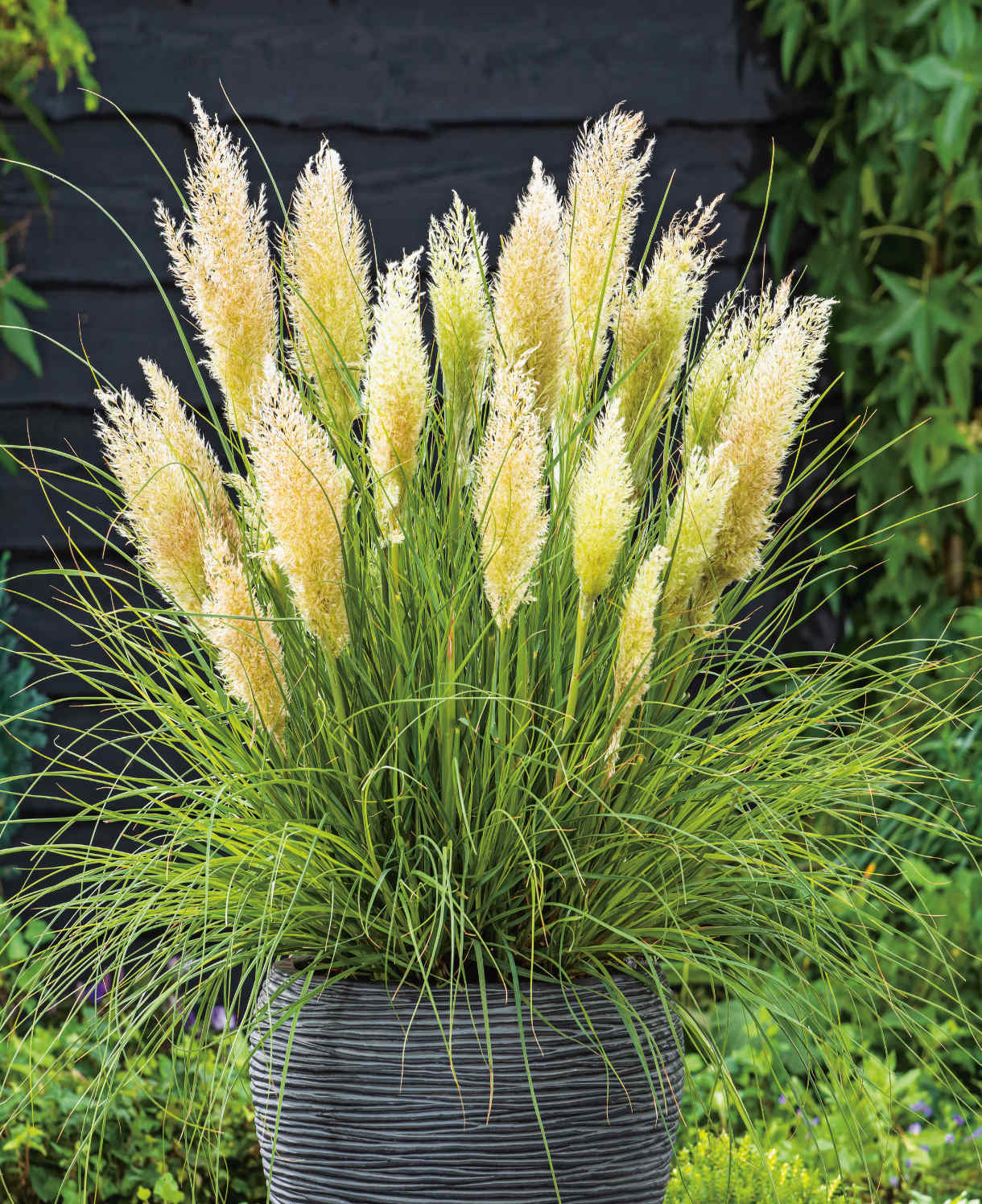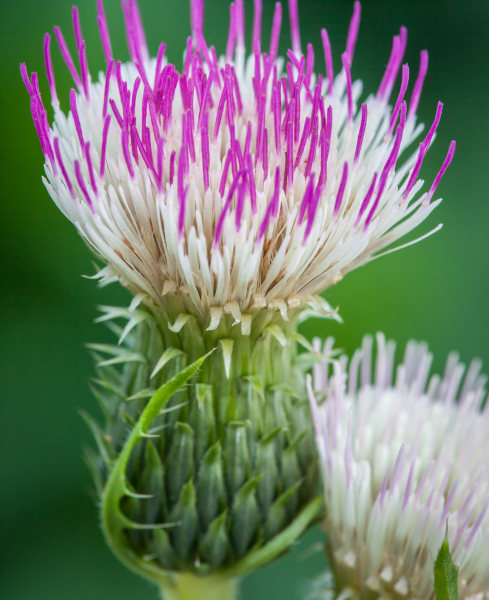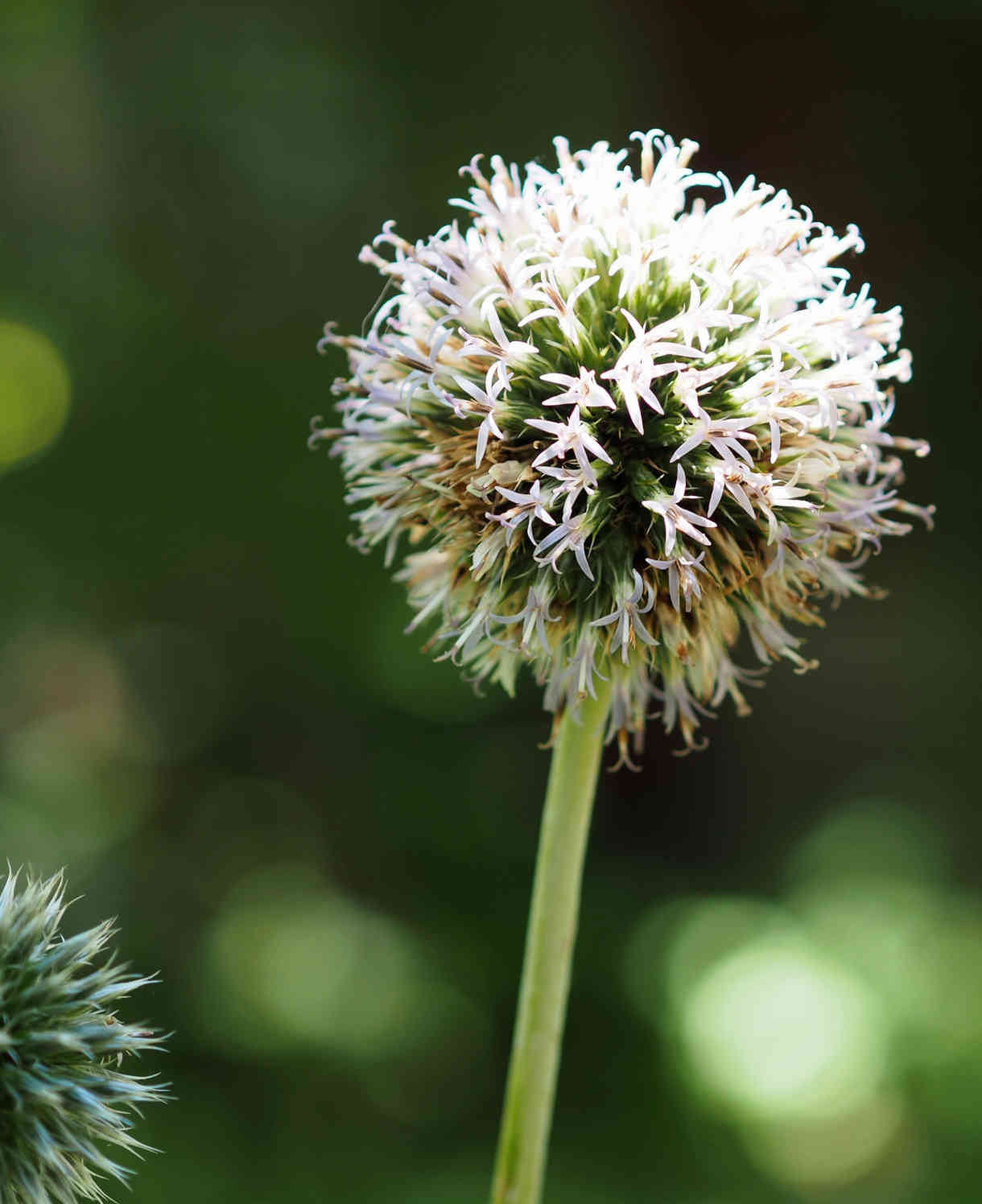How to grow Cortaderia
There are over 20 species of this evergreen grass, found growing wild in South America, New Zealand, and New Guinea. Of these, the most widely cultivated (certainly in the UK) is Cortaderia selloana, and you may also occasionally spot the slightly smaller and more graceful C. richardii. These are large, vigorous, fast-growing grasses grown for their dense clumps of stiff, sharp-edged foliage and feathery plumes of gold, silver, or faintly blush-pink flower panicles.
Cortaderia is also known by the common name, pampas grass.

Key Information
Position
Soil Conditions
Hardiness


Where & when to plant Cortaderia
For best results, plant in autumn or spring. An autumn planting can be done by those gardening in mild conditions (and broadly speaking, this is the southern half of the UK). For those liable to cold winters, it is best to wait until spring (generally the northern half of the UK). Planting can also be carried out in summer, though be prepared to water regularly.
Because of its size, cortaderia is often grown as a freestanding specimen. In larger gardens, it can be used at the back of a border, or en masse as a striking drift. Its razor-sharp foliage makes it a good alternative to hedging for a intruder-proof boundaries, and dwarf cultivars can be grown in containers or dotted throughout borders. The flowerheads are excellent in fresh or dried flower arrangements, so a cutting garden is another suitable spot. Wherever you plant it, make sure you allow your cortaderia plenty of space to grow. This is a big, beefy, vigorous plant which needs plenty of elbow room (apart from the dwarf cultivars of course). Not one for the faint-hearted!
How to plant Cortaderia
- For planting in the garden, dig the soil area removing any large stones and weeds and breaking up any lumps. Mix in some organic matter such as manure or garden compost. If your soil is heavy, now is also the time to add a generous helping of horticultural grit. Rake level and firm with your heels. Rake level again.
- Water plants well and allow to drain before planting.
- A good tip is to dig a hole twice the size of the root-ball. Fill with water and allow to drain before placing in the plant.
- Place the plant in the hole, ensuring the top of the root ball sits level with the surface of the soil. Too low and the plant may rot, too high and the roots can dry out.
- Backfill with soil and firm in gently with your foot.
- Soak well with water.
- Mulch around the base with well-rotted organic matter.
- For planting in containers (dwarf cultivars only), first choose an appropriately sized pot. The best practice is to start just a few centimetres larger than the rootball and increase in size every year or two. Ensure there are plenty of drainage holes in the bottom.
- If you are using a large or heavy pot, it can be a good idea to fill and plant it in situ to save yourself the trouble of moving once full.
- Use a good quality potting compost with plenty of horticultural grit mixed in, and, if not already present in the compost (check the description on the bag) some slow-release fertiliser granules.
- Start by partially filling the pot with compost; enough so that when placed on it the upper surface of the root ball is about 3cm lower than the top of the pot.
- Infill all the space surrounding the root ball with compost, firming down with your fingers then adding a little more so the plant is held tight.
- Pick up the container (if you can!) and lightly tap on the potting bench or ground a few times to help further settle the compost around the plant.
- Soak well with water.
- A mulch with horticultural grit will look attractive and help to prevent a ‘cap’ or crust forming on the top of the compost (something container plants can suffer due to the artificial nature of their watering).

What to plant with Cortaderia
If you are lucky enough to have space for a sizeable bed or border, cortaderia looks spectacular combined with other similarly large-scale plants. Start with other tall grasses such as Stipa gigantea, Calamagrostis x acutiflora ‘Overdam’, and Miscanthus sinensis ‘Hermann Mussel’. Finish with some tough, robust flowering perennials that will be able to hold their own against these giants, like Eupatorium maculatum Atropurpureum, Cirsium rivulare Atropurpureum, Echinops bannaticus ‘Blue Globe’, Veronicastrum virginicum ‘Pink Glow’, and old favourite – Verbena bonariensis. What a line up!



How to care for Cortaderia
Pruning and Deadheading
While cortaderia is evergreen, an annual tidy in late winter to early spring will help keep things looking attractive. Cut and comb out last year’s stems and any dead foliage, making sure you wear thick gloves to protect against the sharp edges (these can give you a really nasty cut if you’re not careful).
Some gardeners set fire to their cortaderia in autumn to keep them in check without having to come into contact with the sharp foliage. While we agree this sounds fun, do so at your own risk!
If you can, leave flower spikes intact over winter – they look spectacular twinkling in the frost.
Watering
New plantings require more regular watering than established plants. During the first growing season in the ground, a good soaking every couple of weeks should ensure long-term success (aiming for consistently moist, but not soggy soil). After this, cortaderias tend to fend for themselves. An annual mulch will help lock moisture into the soil (see also ‘Feeding’ section below).
Container-grown dwarf cortaderias need to be watered regularly throughout the growing season. Allow the top few centimetres of compost to dry out between soakings.
Feeding
On healthy, fertile soil, an annual mulch of well-rotted organic matter (i.e., a layer of manure or garden compost applied to the soil around the plant) should provide sufficient nutrients for your cortaderia. This has the added benefit of suppressing weeds and locking in moisture.
If yours looks in need of an extra boost, applying a general purpose granular feed to the surface of the soil and lightly working in (known as a ‘top dress’) can reap benefits. Aim to do this once or twice a year if needed.
Container-grown plants rely even more on the gardener for their nutritional needs. Get off to a flying start by making sure you use a good quality compost, then throughout the growing season (March to September) apply a liquid feed at regular intervals according to its instructions. Alternatively, top dress with a general purpose granular feed every three months throughout the growing season.
Cold Protection
All our cortaderia are hardy and able to withstand even a cold UK winter without the need for additional protection. Having said this, it is worth being aware that waterlogged soil can pose a threat to the winter survival of these ornamental grasses.
Pests and Diseases
Cortaderia tends to be problem free.
How to propagate Cortaderia
While cortaderia comes easily from seed (and is indeed a keen self-seeder in the garden), the offspring from this tends to be mostly male plants which don’t produce the large, feathery plumes. A more effective method of propagation is to divide plants in spring, though this is only really feasible for young plants. Carry out every couple of years if you wish to keep plants to a manageable, divisible size.
- Choose a day when the soil is not frozen or waterlogged.
- Dig the plant out of the ground.
- Shake off any excess soil.
- Separate the plant into sections using either swift, cutting blows with a sharp spade, or two forks inserted back-to-back with tines touching, handles then pushed together to prise the plant apart. If the rootball is very dense, a pruning saw may be a better way to cut it into sections.
- Discard old, damaged, or surplus pieces, keeping healthy, vigorous material.
- Replant decent-sized pieces where desired, and any smaller bits can be potted up.
- Water well until fully established.
* Many plants carry Plant Breeders Rights and cannot be propagated for commercial purposes.
Common Cortaderia questions
- Can you grow pampas grass in a pot?
While dwarf varieties (such as selloana ‘Tiny Pampa’) are suitable for containers, larger forms are most definitely not! - Is pampas grass invasive?
Cortaderia does spread readily, so you will need to carry out an annual weeding of any unwanted seedlings. Provided you are happy to do this, it shouldn’t cause any problems.




